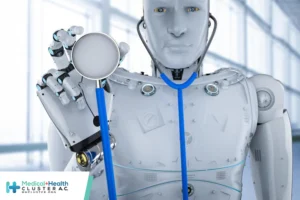En respuesta al anuncio del alcalde Ismael Burgueño Ruiz sobre...
Leer más
Efficacy of Portable Air Systems in Hospital Rooms

Total bioaerosols, including SARS-CoV-2 RNA, were reduced in a hospital unit when the air system was operative.
Transmission of SARS-CoV-2 from patients to healthcare workers has occurred despite the use of personal protective equipment (PPE). Researchers in the U.K. posited that portable systems combining high-efficiency particulate air (HEPA) filtration with ultraviolet (UV) light could provide additional safety by removing viral particles from the air. They studied two multi-bed units dedicated to patients with COVID-19. Nucleic acids were extracted from air samples in medium (1–4 µm) and large (>4µm)–sized particulate fractions and from the filter (<1 µm), and RT-PCR was performed to identify viruses, bacteria, and fungi.
In a six-bed room with the air system off, SARS-CoV-2 RNA was detected in medium and large aerosol fractions every day of testing for 1 week. When a portable HEPA/UV system was turned on in the same room for the second week, no SARS-CoV-2 RNA was detected. In a four-bed room in an intensive care unit, limited evidence of SARS-CoV-2 RNA was seen during the first week (when the system was off), but SARS-CoV-2 RNA was detected in a single sample during the week when the system was on. For both units, the total number of bioaerosol detections when the system was off was significantly higher than when it was on.





COMMENT
These results indicate that adding a portable HEPA/UV system can reduce total bioaerosols — including SARS-CoV-2 — in the hospital environment. However, the study offered no documentation of a reduction in SARS-CoV-2 transmission. If that were the case, these systems could serve as an effective adjunct to PPE in preventing the spread of COVID-19. The results also have implications for nonmedical environments such as schools, restaurants, and offices.
https://www.jwatch.org/na54287/2021/11/22/efficacy-portable-air-systems-hospital-rooms?fbclid=IwAR24Ou90kGhnJ-6QZSh9kl4ds6eIEMvYaHNIHrZuQFxu4UihD1kLkycOKYQ
Créditos: Comité científico Covid